Home / A CONVERSATION WITH COSMIN COSTINAS
By Tan Siuli
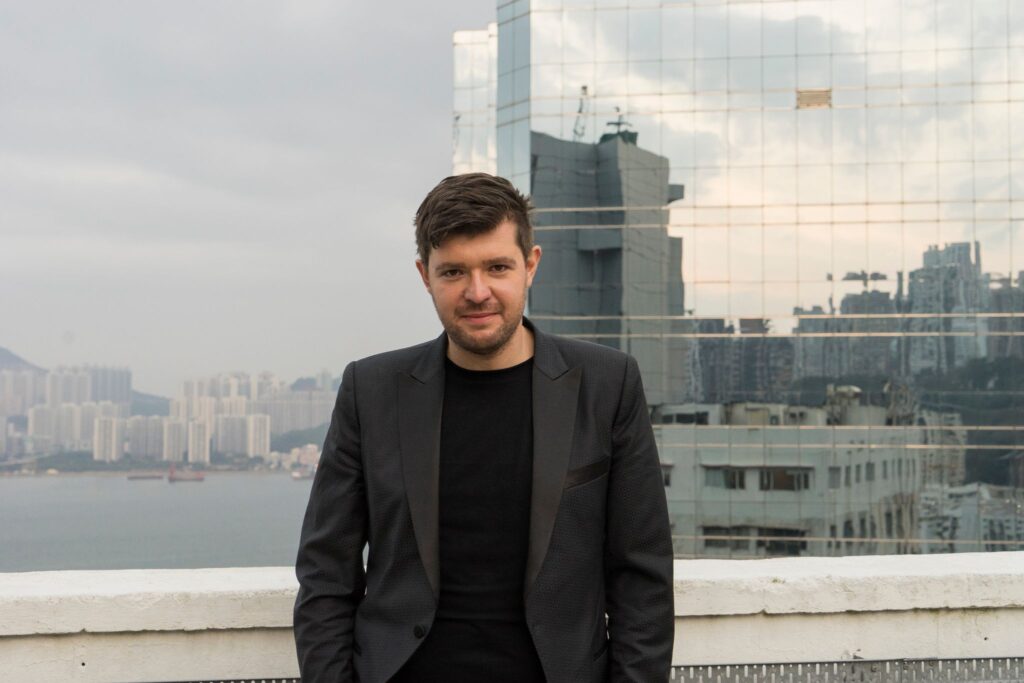
TSL: “What brought you to this part of the world, and what has kept you here and engaged with this region, for so long?”
CC: “I moved to Hong Kong because of Para Site in the fall of 2011, but I’ve been working with artists and institutions in Asia and from Asia for quite some time prior to moving here. Ever since starting working in this field, given both our generation being brought up with a sense that the world geography must include the whole world and on radically different basis than before, or that it is our responsibility to make it such, and to make sure that when we speak of the world we actually speak of the entire world. I think also coming from Romania, a place that was never at the centre of hegemonic narratives about art and culture, meant that I had a different relation to Eurocentric perspectives, which was always seen as something external to us, when I was growing up. So when I moved from the Netherlands to Hong Kong it didn’t feel like moving from a place with more connection to me to one with less. It was a natural engagement with this institution and its context, with Hong Kong and the surrounding region.”
TSL: “The region has held a lot of fascination for you to stay here and to base a lot of your projects around it. What have these sources of inspiration been for you?”
CC: “The thriving artistic and intellectual scenes across the region, the encounters and collegiality and learning processes with a broad array of communities, milieus, groups, and individuals who make this one of the most interesting places to be and a unique sense of mutual engagement, collaboration, and mutual stimulation.”
TSL: “I wanted to ask about two of your projects which take Southeast Asia and Asia as their loci. I caught “Soil and Stones, Souls and Songs” at the Jim Thompson Art Centre in Bangkok a few years back, and while I was not able to see “A beast, a god, and a line” when it traveled to the MAIIAM Museum in Chiang Mai, I did read the curatorial precis.
What strikes me most about both these projects is their expansiveness, how they connect disparate locales and objects across Southeast Asia and Asia, and the kaleidoscope of visual languages, cultures and cosmologies they encompass. These exhibitions offer perspectives which may destabilise frameworks and expectations for audiences who are more accustomed to presentations of contemporary art or a visual language shaped by an ‘international’ discourse.
Is this something you consciously seek to achieve in your projects? Can you tell us more about what shaped your distinctive curatorial approach, and where you draw inspiration from?”
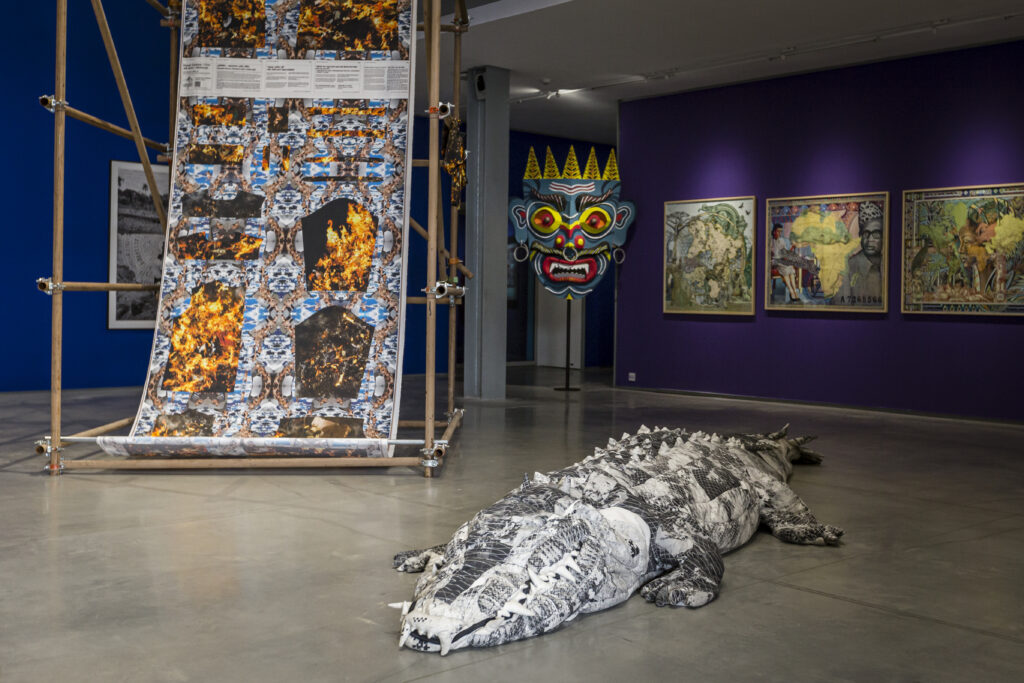
CC: “It’s a great question, thank you very much. There are many vocabularies available to the language of exhibition-making, and in my case, I’m employing different registers based on many factors: the artists that I work with, the works, the institutions, the broader contexts. But indeed I think a number of shows that are quite important to my work from a personal point of view, like the ones you mentioned, tend to have that visual, scenographic, and conceptual complexity, and that is in my view largely a reflection of how the world is. We do agree that art, and exhibition-making as well, because they’re in fact different things – the artistic strategy and what an artist does with their work in relation to the world on one hand, and what a curator does when making an exhibition on the other hand – we do agree that there is a relationship of reflection and interaction going on. So I think it is a question of responsibility, and even duty, to reflect the world in its complexity, in its multiplicity of visual regimes and principles of organization, in its cosmologies as well if you wish – so not only working with the realm of the immediately visible, but also with how that is connected to a broader cosmology. And I think that is something that curators and exhibition-making should reflect.
And while this might sound like something relatively novel, or as something in opposition to another way of curating, it is because indeed exhibitions for a long time have reflected a rather narrow worldview, cosmology, and aesthetics which stem from the core of the Western World.
There are great efforts currently done to decolonize the world of art, from what is being said and by whom they are being said, to how we understand institutions and funding and the power structures that lie behind them. And I think it is also important to understand there are a number of other elements that should be taken into account when we speak about decolonisation, and they pertain to the spatial and visual regimes of an exhibition. While the histories and politics behind these are less visible than those told in the works or those informing the economy of the institution, the way we navigate a place or how we organize the space as curators is also connected to particular visions of the world. And for a long time exhibition making has reflected quite uniformly a Western-centric one. So I think it is important to deconstruct that, and to understand the multiplicity of visual regimes that form the reality and the experience of most people in this world.
When you live and work in a community in let’s say Dhaka or Hong Kong with all the concerns and cultural references constantly being produced there, and when you walk on the streets of these cities and when you walk inside the exhibition, the principles of building that exhibition should probably be different than those of an exhibition staged in Western Europe, and not as some sort of way of exoticising the streetscape or the alterity of the urban experience, but as a consistent and responsible reflection of everything that defines the context of where the exhibition takes place.”
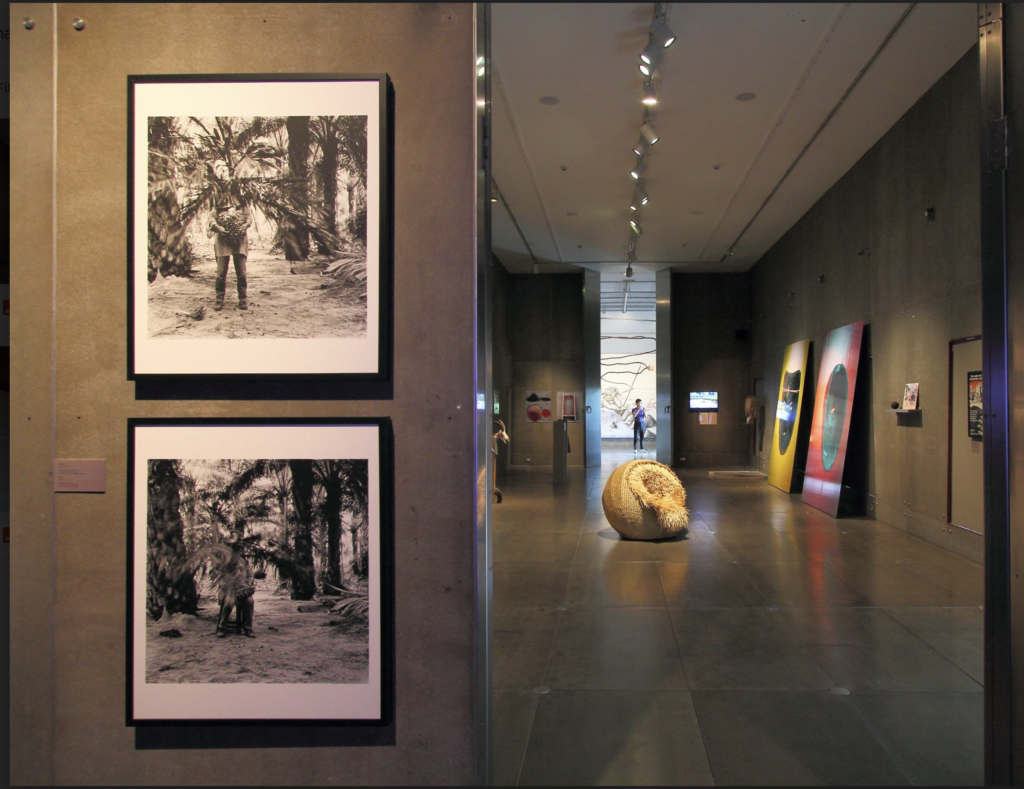
TSL: “A beast, a god and a line traveled quite extensively, from the Dhaka Art Summit to Para Site in Hong Kong, to Yangon, Warsaw, Trondheim in Norway and lastly to Chiang Mai. Were you involved in rethinking each iteration, and how it could be presented in say Trondheim vs Chiang Mai vs say, the Dhaka Art Summit?”
CC: “That’s another very good question. We had continuous conversations with everyone involved in the exhibition — and I’m not sure that we actually arrived at a very clear conclusion, or that we managed to find the right way of doing it, but it was a dilemma between trying on one hand to adapt to the different localities where the show went, and being nevertheless faithful to the original place where it was shown, and for which it was conceived. There was a certain wish from our side to be faithful, and to acknowledge the original context that generated the show. And not as some form of exoticizing by touring of a Dhaka experience, but precisely because so many of the things that are at the core of the show, and the conversations that the show tried to capture were conceived for an Asian audience. It was imagined for it, it was not meant to be a large showcase of Asian art to be shown in Europe or opportunities to ‘learn’ about Asia, or any of these types of complicated regional shows that often circulate in the Western world. So it was a show that was primarily imagined with Dhaka in mind, and with the prospect of it primarily traveling within Southeast Asia and Hong Kong, with all the clashes and conflicts and conversations that are relevant for these locales. So that was an important set of decisions we had to take and I hope our original intentions managed to be conveyed in the different places that the show went to.”
TSL: “I wanted to pick up on something you mentioned — what would you say are some of the differences between what you define as an ‘Asian’ audience and a Western one? How might they approach exhibitions differently?”
CC: “When I used the term, it should have been more precise than ‘Asian’, so I was referring more to a Bangladeshi audience and also a Burmese audience, because when the show was conceived, one of the most painful and tragic borders in the world was the one between Bangladesh and Burma, which was being crossed by the Rohingya refugees escaping the genocide in Burma. So that was the context, and most of the artists are from this region. So when I spoke about an ‘Asian’ audience, I meant audiences that are from the same context as the artists and the subjects being narrated – audiences who recognize the things that are immediately familiar to them, rather than audiences that see things happening from far away, and with all the baggage that comes with that European gaze of looking at the world, particularly at objects being brought to them from outside Europe, which repeats so many colonial patterns.
When the show traveled to Europe, we insisted that it should primarily be a learning opportunity for the European audiences about themselves. We had a couple of European artists in the show initially, but we didn’t add any Polish or Norwegian artists as the show traveled there, so the intention was never to localize the show in this way, but all the subjects raised by the exhibition were in fact relevant to a Polish audience. “A beast, a god and a line” is largely a show about rising nationalism and the emergence of politicised religion and the loss of faith in democratic structures – these are issues that are obviously relevant in Southeast Asia, but they are equally relevant in Poland and throughout Europe in fact. So the message to the European audiences was for them not to see in this exhibition odd things happening afar, but to see issues that are as present there as they are in many places around the world. But yes, there is a difference in seeing this show as a Bangladeshi exhibition-goer, who sees an artist who is also a Bangladeshi talking about particular stories happening in Bangladesh, versus making that exercise of recognition that was asked from a Polish exhibition-goer.”
TSL: “I will come back to this in a bit – the seeding of narratives from Southeast Asia which have a kernel of a more universal experience within them – but speaking of “A beast, a god and a line”, I understand that one of the ‘threads’ that connected the multiplicity of narratives in the exhibition was…textiles. And I know you’re an avid collector of textiles yourself. This brings me to recall a Zoom talk I attended recently, discussing narratives of Southeast Asia, where art historian Simon Soon spoke about the sekar jagad motif in Indonesian batik, and how its patchwork nature suggested to him something of the diffused nature of power and influence in the region, as opposed to a more conventional centre-periphery framing. The sekar jagad motif has parallels with archipelagic thinking, and of course much of Southeast Asia is an archipelago as well. Also, Indonesian art collective ruangrupa, who are curating the upcoming edition of Documenta, have also drawn on a local motif, that of the lumbung — a form of vernacular architecture that approximates a rice barn or granary — as a curatorial principle for the exhibition: the lumbung serving as metaphor for communal governance as well as sharing of resources.
I was wondering, if there are any ideas, motifs or epistemologies emerging from the Southeast Asian region, that interest or excite you, as possible frames for thinking about artistic production and curating?”
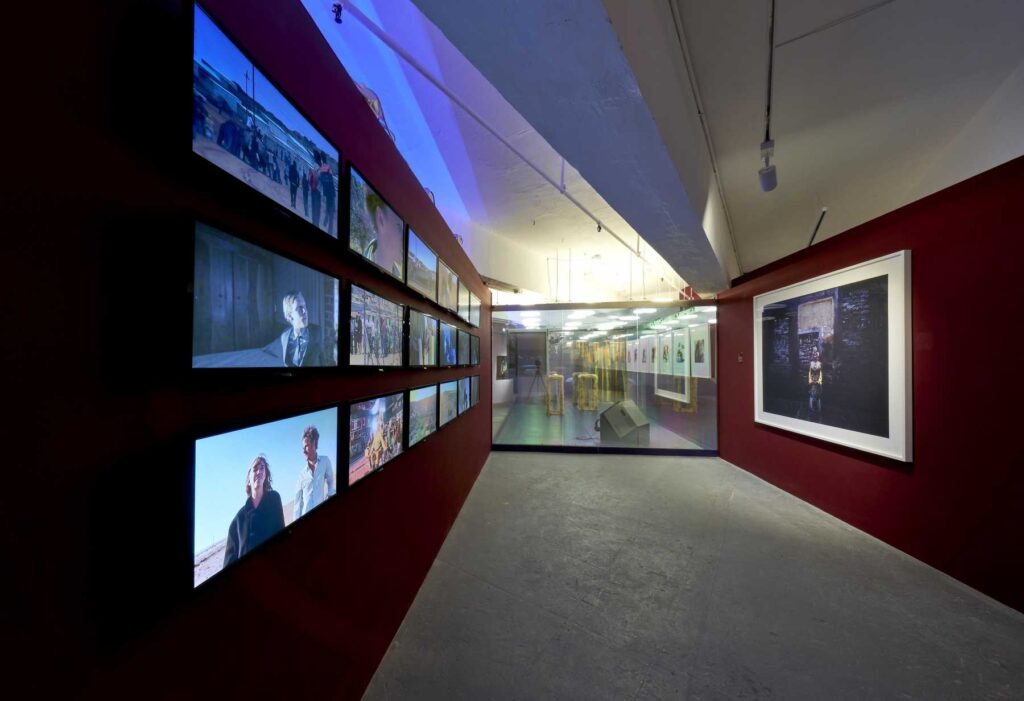
CC: “Many things! We had an exhibition called “An Opera for Animals” at Para Site, 2 years ago, and we included different examples of operas and of performative and ritualistic structures that perform the same role that opera performed in a Chinese or Western context, or wherever this term has been more commonly applied. So one such example was a type of spectacle happening primarily in Java, throughout the 17th– 19thC — the protracted period of colonial expansion in the region. As it was one of the slowest-paced processes of colonization by the Europeans, a complex situation of resistance and accommodation, in some cases, developed with many parallel cultural formations. One such example were fights organised between a tiger and a buffalo for a large audience. There was a common assumption that the tiger was a metaphor for the European colonisers, whereas the buffalo was a symbol of Southeast Asia. These fights were interesting because while one might expect the tiger to be the apex predator and thus the sure winner of the fight, which might also be the expectation in regards to the superior weapon power and capital of the Western colonisers, in the fight between the tiger and the buffalo, in the vast majority of cases, the buffalo prevailed. Because it’s stronger, sturdier, has its feet on the ground, and ultimately manages to exhaust the tiger, who eventually gives up. And this kind of fights were organized in various circumstances usually by local Sultans. Sometimes they were done for their own local audience, sometimes for visiting European colonial representatives, but it was also very clear what the metaphor was, for everyone present there, so it was a very interesting performative ritual of reinforcing the arguments for indigenous power. So I think that’s an incredible example, particularly if we regard it as an operatic spectacle, as a complex performance, and as a way of using an artistic gesture to convey that complex political and diplomatic messaging.”
TSL: “Building on this and what we discussed earlier about how what someone experiencing in Burma could be expanded to an European audience confronting similar issues, what do you think are some of the interesting points of connection between Southeast Asia and other parts of the world, in terms of narratives or frameworks? “
CC: “If you think about art, what has defined the system of contemporary art is that contemporary art IS in many ways a shared global language. It is that convention which allows things to be said with essentially the same language. Contemporary art is not a Western product, it is a system that developed within this global society in the last 30 years, even if it relies on a number of institutions and structures that do have a longer history in a Western artistic context. But this last part is actually hardly relevant when we discuss the global status of the contemporary art system. At the same time, obviously artists choose to refer to and engage with local specificities, and if we speak about that, Southeast Asia is obviously the most diverse region on earth, one that has essentially every form of social, political, and economic system seen in the world, from absolute monarchies to communist countries, from countries of extreme wealth to countries of staggering inequality, all the major religions of the world, etc. So there is this incredible breadth of references that artists work within the region. So on one hand there is the unity of the contemporary art language, and on the other the broad spectrum of references that are being brought in the artistic narratives.”
TSL: “I think you’ve pretty much answered my next question. I was going to ask, in your opinion, what does Southeast Asia, its art and its art ecologies have to offer?”
CC: “I think it’s probably that, that kind of simultaneity of unity and multiplicity, something that is otherwise seen around the world.”
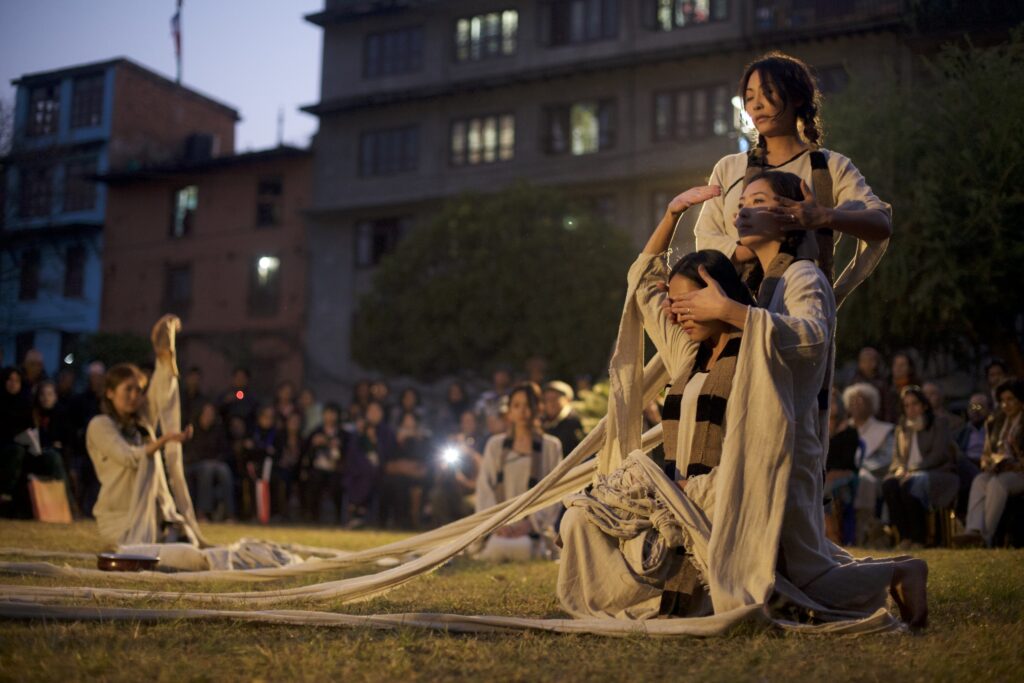
TSL: “I wanted to ask about the upcoming Kathmandu Triennale, of which you are Artistic Director. Can you tell us what audiences can look forward to? Are there any sites in particular that you are excited about, and what do you hope to achieve with this project?”
CC: “We have moved it because of Covid from last year to the 27th October of this year. We are very much hoping to be able to open it safely, even if it’s just for our Nepali audiences who are of course our main audience, and for audiences from abroad as well if the situation will allow.
The Triennale has been built in a way that is very much connected to the scene and not as an alien body parachuted from somewhere else, it is organically part of the diversity of the Nepali art context which is truly remarkable. Nepal is a place with a lot of conversations, structures, many of them self-organized and generated by artists, but it is a place of unique artistic and intellectual dynamism, and there is a strong awareness of what art can do in the process of building a different type of society, which is what has been happening in Nepal after the removal of the monarchy and the end of the revolutionary civil war. And largely because politics — like everywhere else — has dampened a lot of that initial revolutionary enthusiasm, art is one of the places where a lot of that spirit of reimagining the foundations of society and of collectives and of community, is still happening. We’re hoping to be able to reflect all that in the exhibition, and we’re also very excited about the different venues that we have. Kathmandu is of course an incredible city with different layers of history, with contemporary architecture and life, and also different features of heritage from different historical eras, and we’re lucky to have venues from all these different layers, and to be able to take the exhibition into quite a rich urban experience. So I think visitors will also have a wonderful opportunity to immerse themselves in the city and its history and the different social structures, while visiting the actual exhibition.”
TSL: “You will also be curating a series of panel discussions for Art SG, addressing Southeast Asian art and the global art landscape. Are you able to share with us at this moment what we can look forward to?“
CC: “A lot of things we have discussed already will certainly be part of it, but I think largely and inevitably we will have to discuss about how we recompose our world and our sense of internationality after the Covid experience. We are hoping by then we will be, in one form or another, in a post-Covid reality, so I think that will be a subject that will be on everybody’s mind, and it will be a moment when we will actually be coming together, for the first time almost, so it will be important to understand where we find ourselves after the tidal waters of the Covid experience would have retreated.”
ABOUT THE AUTHOR: TAN SIULI
Tan Siuli is an independent curator with over a decade of experience encompassing the research, presentation and commissioning of contemporary art from Southeast Asia. Major exhibition projects include two editions of the Singapore Biennale (2013 and 2016), inter-institutional traveling exhibitions, as well as mentoring and commissioning platforms such as the President’s Young Talents exhibition series. She has also lectured on Museum-based learning and Southeast Asian art history at institutes of higher learning in Singapore. Her recent speaking engagements include presentations on Southeast Asian contemporary art at Frieze Academy London and Bloomberg’s Brilliant Ideas series.
